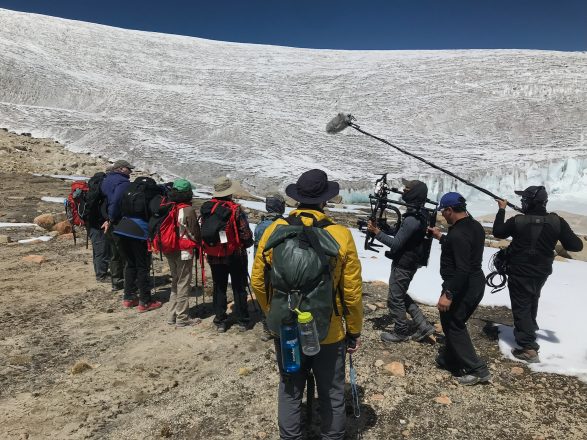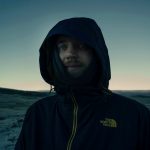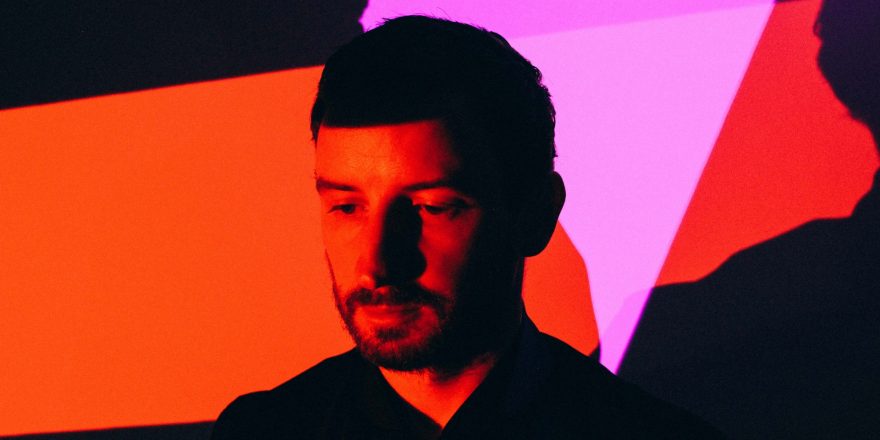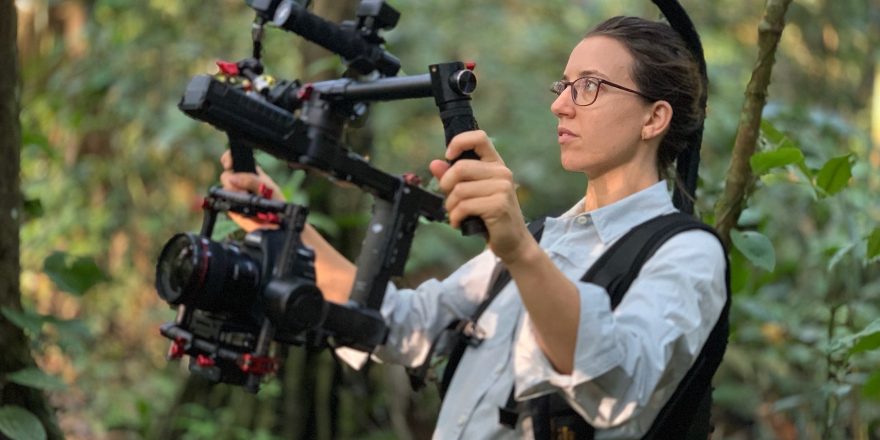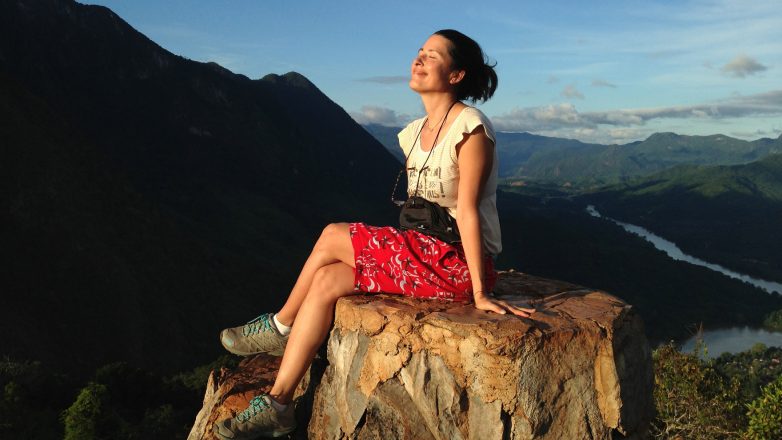I’m standing on top of the world, but it doesn’t feel that way. At 33 years old, I’m directing my first feature film, and we’re standing at 18,000 feet in Peru on top of the world’s largest tropical glacier. To get to our “set” that day, we hiked three hours in a straight line, walking gradually up towards a nearly flat white horizon. There is half the oxygen that there is at sea level. With that amount of oxygen, we are essentially drunk driving.
I’m working with my directing partner, Alex Rivest, Ph.D., an MIT-trained neuroscientist. Our goal is to make a film about Dr. Lonnie Thompson, a “real-life Indiana Jones” figure, who 35 years earlier defied conventional wisdom by carrying a six-ton drill up a mountain to extract ice core records from the glacier. What he brought back fundamentally changed our understanding of the planet. The problem is: there’s a storm coming in, we can already see lightning, we’re all holding metal film equipment, and there is no shelter. Lonnie is debating with his team what to do, and our team is filming the conversation. The three-hour walk is not necessarily safer but it gets us in our tents faster. It also means a wasted day; we came halfway across the world and we only have two days to film ice-core drilling on top of this mountain. Lonnie is calm and wants to stay. One of Lonnie’s team members is saying we should head back, and I feel the same. I picture lightning striking the boom pole and the film crew being tossed into the snow, so I tell the sound recordist to lower the boom pole. The crew wants to keep filming, but I feel responsible for their safety.
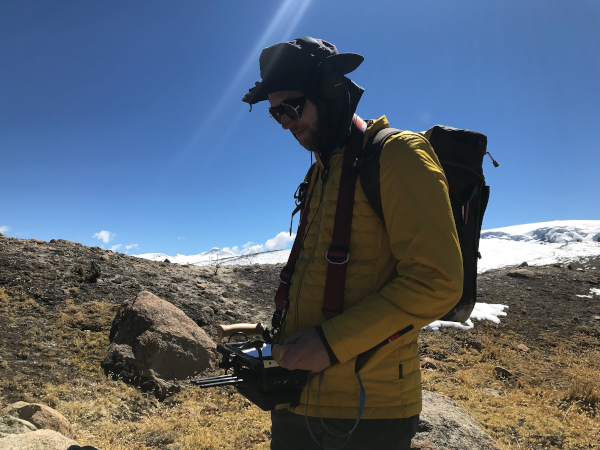
I was the one who convinced them that making a movie at 18,000 feet was a good idea. I leveraged all the goodwill of my success on Chef’s Table to convince my longtime employer, Boardwalk Pictures, to support the project in ways they never had with an indie film before, and I thought it was a good idea to take the Chef’s Table-sized film crew up an 18,000-foot mountain and to change the way science stories were told. I felt the weight of all that on my shoulders.
Ultimately, nervousness wins. We put the camera and equipment worth over $200,000 under a tarp in a snow pit so they don’t become lightning rods, and head back down the mountain. We walk 30 feet apart from one another. The idea is that if lightning hits one of us, it won’t hit us all. This doesn’t necessarily make us feel safer. More than an hour into our hike down, the storm clears up, but it’s too late. We have to go back down. The day is wasted. As I walk back in defeat, I can’t help but wonder, was Lonnie right? Should we have stayed?
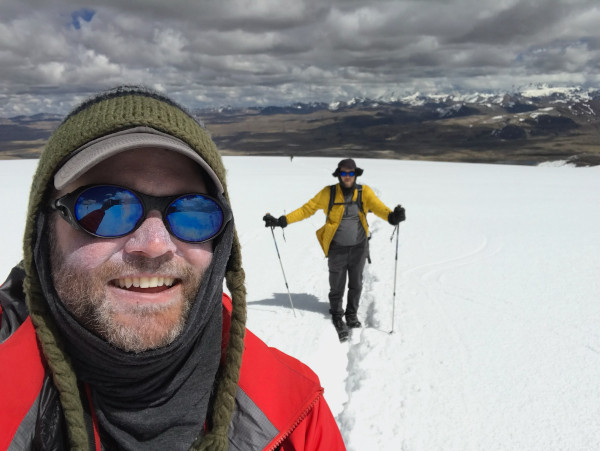
I first met Alex in 2014, the summer before season 1 of Chef’s Table was filmed. He had just married one of my friends, and we all went out for a meal in Little Tokyo in Los Angeles. By the end of the dinner, we’d bonded over a love of science and a feeling that most science shows felt like homework. We talked about what a new kind of science TV show could be. In that one conversation, we decided we were going to find out. We got an Alfred P. Sloan Grant with the goal of finding the best stories in science. We wanted to prove that scientists could be as compelling to large audiences as the heroes of Chef’s Table. So, we made a spreadsheet of 576 scientists, narrowed it down to 50 who had potential and interviewed 30 of them. Which led us to Lonnie.
When we first talked to Dr. Lonnie Thompson, he told us an adventure story that had us hooked within the first minute; within 40 minutes, hearing about his heart transplant had us on the verge of tears. His life story was equally compelling; he was born into poverty in coal country and became one of the leading climate scientists in the world, warning about burning fossil fuels. Every step of the way he faced resistance. From colleagues, scientific rivals, even his teachers, who told him, “Don’t dream too big because you’re going to be disappointed.” But he persisted and changed our understanding of the planet. The glaciers he studies are important too, as they provide water to billions of people in the global south. In 1991, he revealed to the world that due to global warming, they would disappear, calling them the canary in the coal mine warning us about climate change. Alex turned to me and said, “If there’s only one story we ever tell, it has to be this one.”
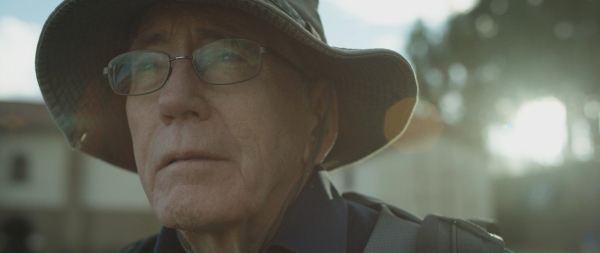
The problem was, Lonnie had no expeditions planned that year. So, we chose four other scientists and went to film them so we could pitch our TV show. We went to Egypt to meet a woman who was told she’d never be a scientist because it was seen as a “man’s job,” and proved everyone wrong when she published in a leading scientific journal. In Bali, we watched a venomologist wrestle a python and wrangle deadly King Cobras. In Belize, I fought sickness as I hiked into an ancient cave where a scientist tracked the rituals over time leading up to the Mayan collapse. In Kenya, we met a scientist who told us epic cloak-and-dagger stories of how he fought corruption in an effort to save the lions. There were death threats, big stakes, and it was very emotional. After the interview, he said, “I’ve been on 50 TV shows, and no one has ever asked me about my story.” It was clear this world was full of drama and intense stories that Hollywood was overlooking. We had our finger on the pulse.
As we put together our pitch materials for the TV series, we received an email from Lonnie: “I’m going to the glacier that started my career. Are you still looking to film?” We knew Lonnie recently had a heart transplant and this might be our last chance to capture him in action, so we said, “Of course.” We had no money and no idea how to get it and, on top of that, I’d never climbed a mountain before. We definitely didn’t know how to get a film crew up to 18,000 feet, but we knew for sure we were going to try. We put the TV show on hold, and started making a movie.
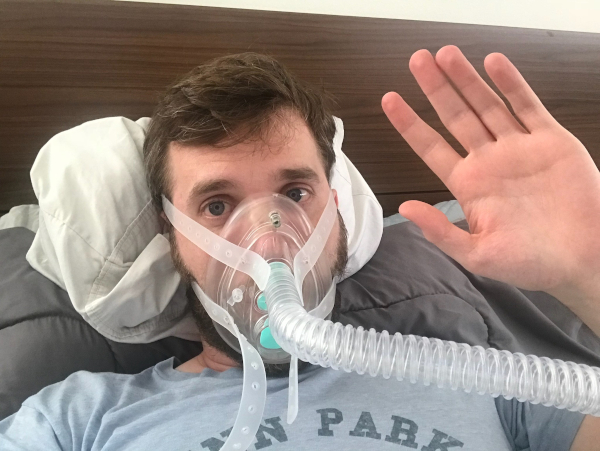
It turned out that filming at 18,000 feet was no joke. At those altitudes, the lack of oxygen wreaks havoc with people’s bodies. On the gentle end, it’s exhausting, hard to think, you can throw up or get a killer headache. On the more brutal end of the spectrum, some people temporarily go blind, pulmonary edema causes some people to drown in their own fluids, and cerebral edema can expand your brain, killing you. In addition, technology fails at that elevation, either because of the extreme cold or the lack of oxygen affecting the electronics. No one expected the movie cameras to work, and there are dozens of unique parts you can’t even replace in some major cities, let alone on a remote mountain. On top of that, moving them around at altitude was a whole other challenge. We had no plan for any of that.
Lonnie said we would take time to acclimatize to the altitude, but even if you take it slow, it’s still a dice roll of fitness, genetics and luck. After some research, we discovered there were machines athletes use to simulate low-oxygen environments to get a competitive edge in sports. It was unclear if it would work, but we were down to try anything to hedge the risk. The machine looked like a portable air conditioner, and attached to it was a gas mask. Alex and I each rented one for our apartments. At night, we hooked it up to a tent that simulated low-oxygen environments and slept at a simulated 17,000 feet. During the day, we did our planning emails with a gas mask that simulated elevations up to 22,000 feet. For our U.S. crew, we arranged low-oxygen training sessions on exercise bikes.
On the way to the mountain, we got a flat tire. At the end of the road, we saw dozens of horses from the local communities come from every direction to join the expedition. As we hiked to the mountain, the shoot became more challenging. While Lonnie and his fellow scientists started their ascent, we did the same – while trying to simultaneously orchestrate a film shoot around them. The 14 large cases full of equipment that we normally transported in vans were carried on horseback, via porter or by ourselves.
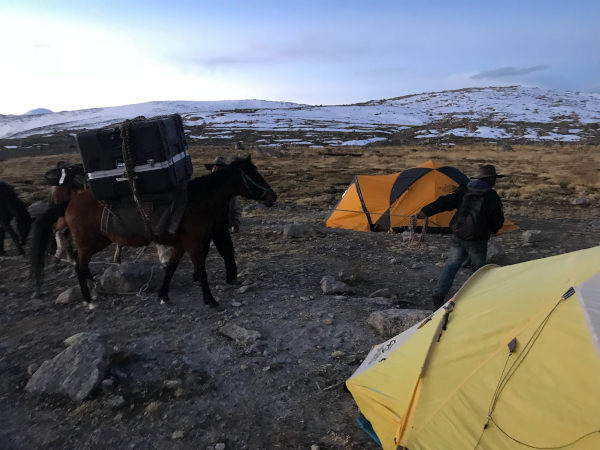
At basecamp, which was around 17,000 feet, we started to really feel the elevation; some of us had headaches, it was hard to think, we hiked slower and I had a terrible cough that kept me up all night. Our shoot days started out with one-to-two-hour hikes to the different locations. We would film Lonnie monitoring the glacier with photography. He would show us laminated photos of where the ice once was while standing on the edge of the lake that ice had become. Lonnie and his team sampled plants that were once covered by the glacier to radiocarbon date the glacier’s age. While we filmed, there was a constant rush of the river of water flowing off the melting glacier, reminding us of the global forces of climate change that are violently reshaping this landscape. As we spent half of the daylight waiting and hiking, we weren’t actually shooting that much. I frequently wondered, “Are we even getting enough footage to make this film?”
On the last few days of the expedition, Lonnie was going to do his most important work, the work that had started his career here almost 40 years prior: drilling ice cores to get climate records going back more than 1,000 years. After the storm forced us to abandon the shoot on the first day, we returned on the second day wondering if the camera we’d left overnight on top of the mountain would still be functional. Fortunately, it was and so we shot ice cores every which way we could imagine. Wide lenses, slow motion, drone footage, and captured everyone’s role in the expedition. The footage was spectacular, and I’ve never seen science look like that. We were riding high. As we walked down that glacier for three hours, the sun set with a beautiful red, as if the whole world were on fire. It was the most beautiful sunset I’ve ever seen. The pictures we took couldn’t come close to capturing how beautiful it was.
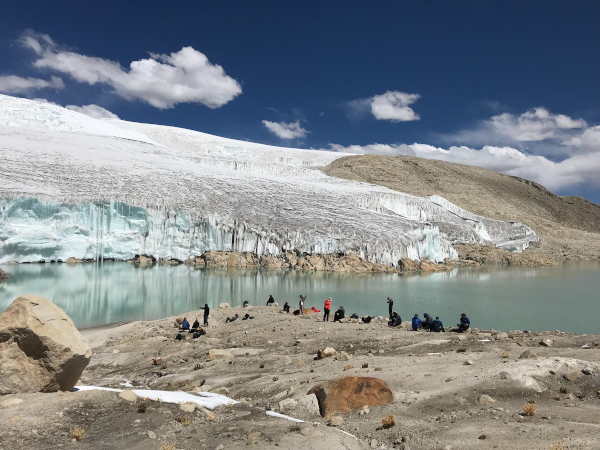
It took six months and dozens of versions, but I was able to turn that footage into an undeniable fundraising trailer for the film. That became our engine that allowed us to shoot in Ohio, West Virginia, San Francisco, Boston, China, and to finally wrap production. We went into post production and, shortly after, the pandemic hit. During the edit, we had failed distribution deals, pitches and rough-cut screenings. At one point, as we were struggling with the edit, I laid down on my bed and said to my girlfriend, “Maybe I’m not good at this.” On my screen, I’d see Lonnie, who didn’t just go on one expedition up a mountain, but 65 of them. He would say things like “Things are only impossible until they become possible” and “I believe there’s nothing we can’t achieve.” These weren’t just platitudes; Lonnie has lived it, faced more obstacles than we ever did and accomplished way more. That’s what kept us going. It made me realize the pain of failure passes. The only measure of success is how much failure you can endure.
Over the course of making Canary, we filmed on three continents, as I worked my way up from story producer to executive producer of Chef’s Table, and turned down lucrative jobs that my heart wouldn’t have been in. Alex, meanwhile, left science to pursue filmmaking full time, had two kids and bought a house in San Diego. It was a ton of change. Though we had a lot of fun and adventure, much of it felt like failure. We kept going, turning every dead-end into a stepping stone to the next opportunity.
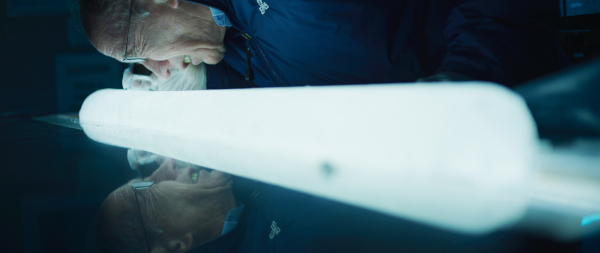
Now, I’m on top of the world again. Our film, Canary, is finished and will be in theaters September 15 in limited release, and will be in 150 theaters across the United States on September 20. I’m incredibly proud of the film, and it turned out great. I can’t wait for the world to see it, but what happens next is unknown. As I stand on top of the mountain, I look back on what we set out to do. We set out to change the way scientists and science are seen on our screens. I feel nervous about how audiences will respond to the film, but I think back to Lonnie on the summit five years ago, and I see why he was calm. He had endured much worse storms in his 40 years, and he knew how to survive them.
Featured image shows the Canary film crew shooting Lonnie Thompson at the base of Quelccaya. All images courtesy Danny O’Malley.



